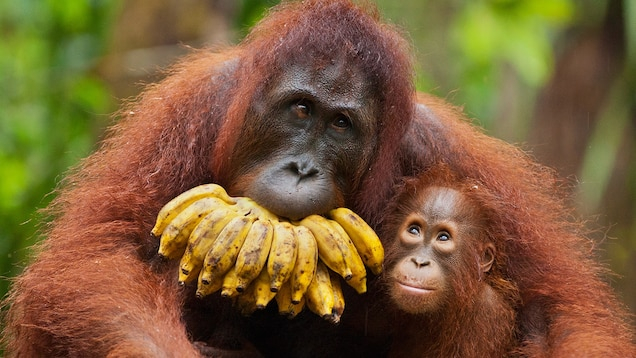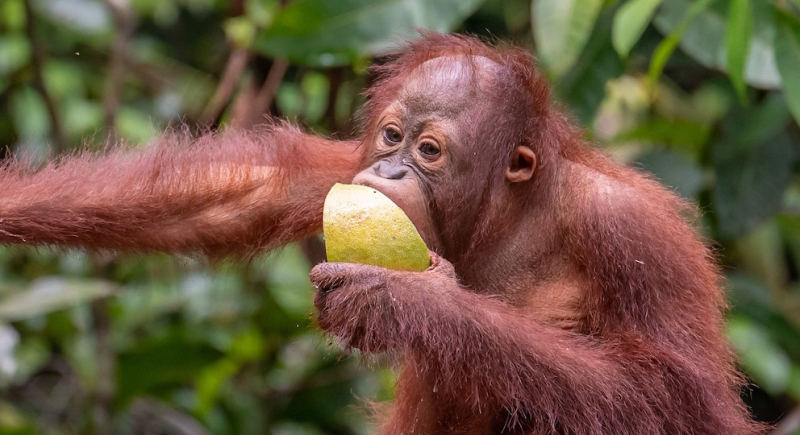They Have Smelly Taste In Food
Bark, leaves, flowers, a variety of insects, and, most significantly, more than 300 different kinds of fruit make up their diet. The moms must instruct the infants on what food to consume, where to locate it, in which trees, and at what times of the year. Orangutans must have a very accurate mental map of the forest and be familiar with the many tree species' fruiting periods. (This avoids wasting precious energy getting to a certain fruiting tree whose fruits won't develop for a while and searching for fruit trees at random.) The infants will eventually need to know hundreds of different plant and tree species, which ones are edible, and how to prepare them; some are extremely challenging to consume due to their protective shells and spines.
In contrast to most primates, the orangutan is relatively autonomous, since food is frequently sparse in the rainforest. When there is plenty of food available, orangutans may take advantage of the chance to interact with one another and form small groups.
While almost all the food they consume comes from the trees, they also use other resources to supplement their diets. The Tapanuli orangutan has been seen gathering caterpillars for its own use, for instance. Rain falls frequently, filling the leaves and supplying them with drinking water. They chew leaves to create a sponge to absorb up water in tree cavities when getting water is difficult.












